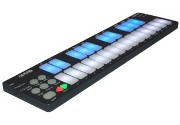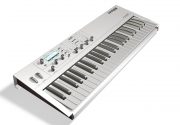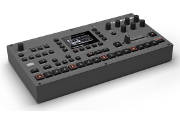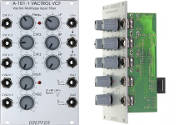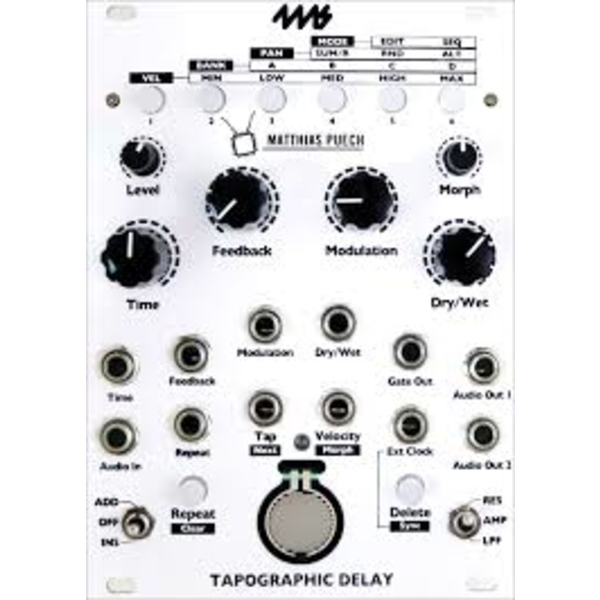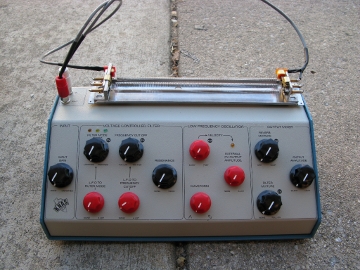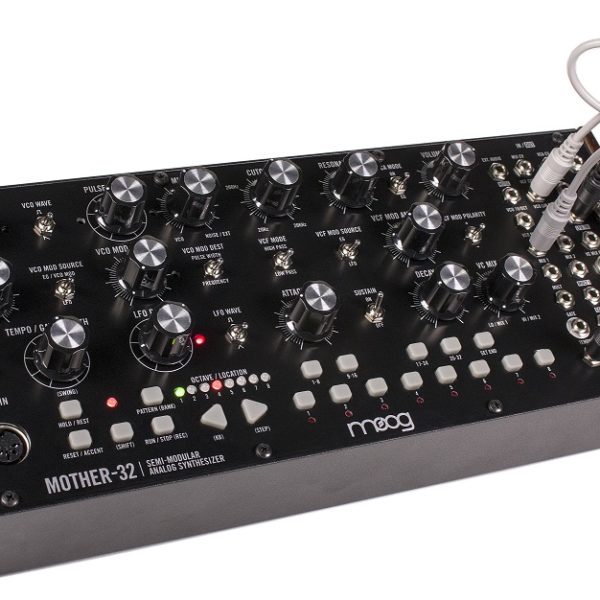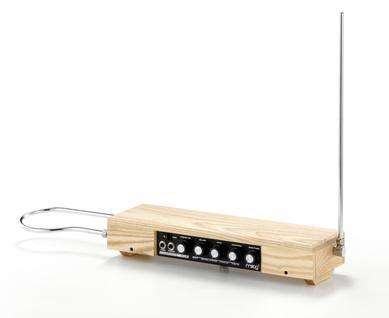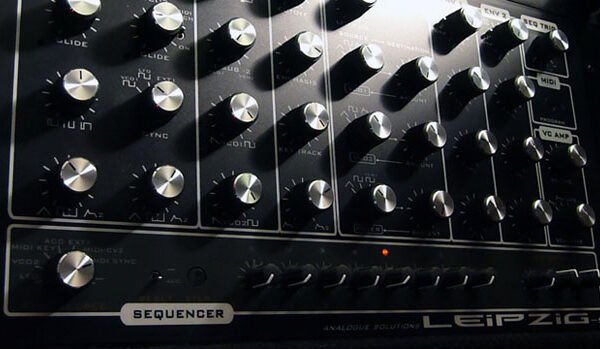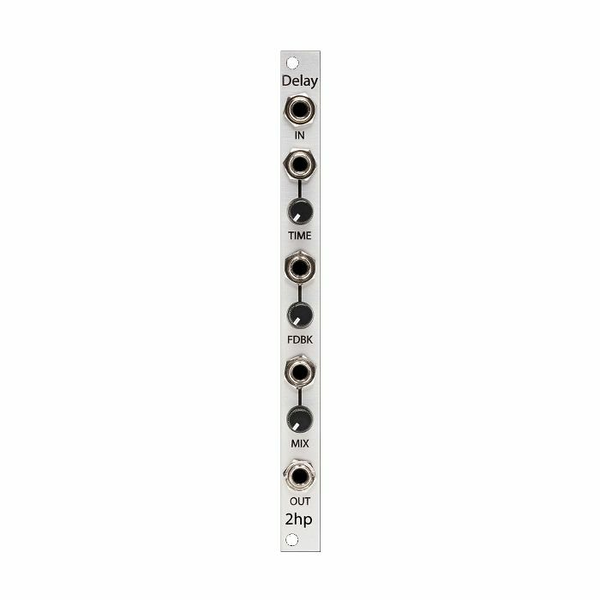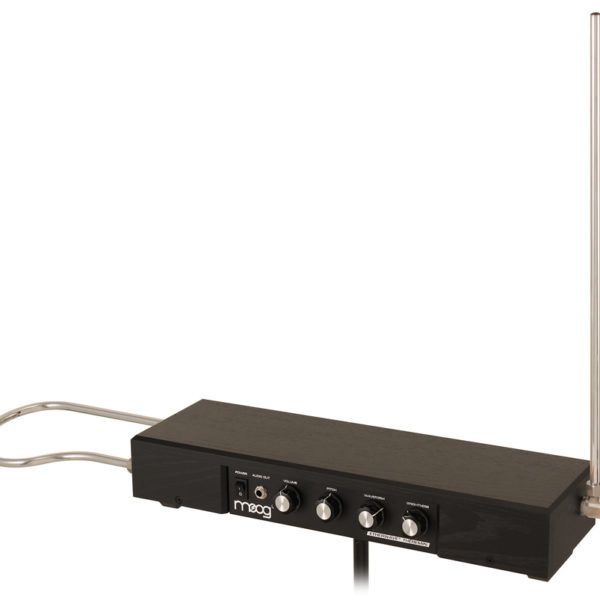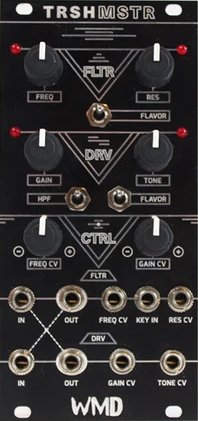The Tapographic Delay is a complex multi-tap delay in the Eurorack format with a unique interface designed for live performance. It excels at transforming the simplest audio (a drone, a percussive sound) into complex rhythmic structures, meshes of organic textures, lush harmonic mille-feuilles, liquid and resonant effects.
Have you ever got tired of the monotonous repetitions that your standard delay pedal/module produced? Have you ever wished for a more complex rhythmic structure than just decaying repetition? If yes, you have come to the right place: the Tapographic Delay is an advanced effect that lets you handle repetition in a completely novel way. It is to a traditional delay what a full rhythmic sequencer (with pattern recall, velocity control, tactile input) is to a simple clock.
With the TD, you interactively define the rhythm that the repetitions will follow: a velocity-sensitive sensor allows you to record, edit, modify, and sequence your own arrangements of delays. In a sense, the TD is the converse of the classic Frippertronics sound-on-sound setup popularized by Robert Fripp in the 70’s: you don’t play the guitar, you play the tape loop!
The Tapographic Delay is an expressive experimental instrument meant to be played in real-time, rather than a set-and-forget end-of-chain effect. Interact with it! Experiment! Push it to its limits!
The Tapographic Delay features:
Multi-tap audio delay line with advanced features
Velocity-sensitive force sensor to tap the delay configurations (tapographies)
Up to 32 taps, each with its own delay time, amplitude/filter and panning
Low-pass filter or resonant (pingable) band-pass filter on each tap
Morphing between delay configurations, with adjustable morph time
Two different feedback paths: a Repeat toggle and a Feedback knob
Save and recall up to 24 delay configurations (4 banks of 6 slots each)
Tapography sequencer with forward, random walk or random directions
Synchronization to an external clock, with clock divider/multiplier
Gate output that plays the current rhythm of delays
Maximum delay time of 174 seconds (almost 3 minutes)
16 bits/48kHz with 32 bits floating-point internal processing, 1.3ms software latency
Mono-in, stereo-out operation
| Width | |
|---|---|
| Current draw | |
| Depth | 25mm |

